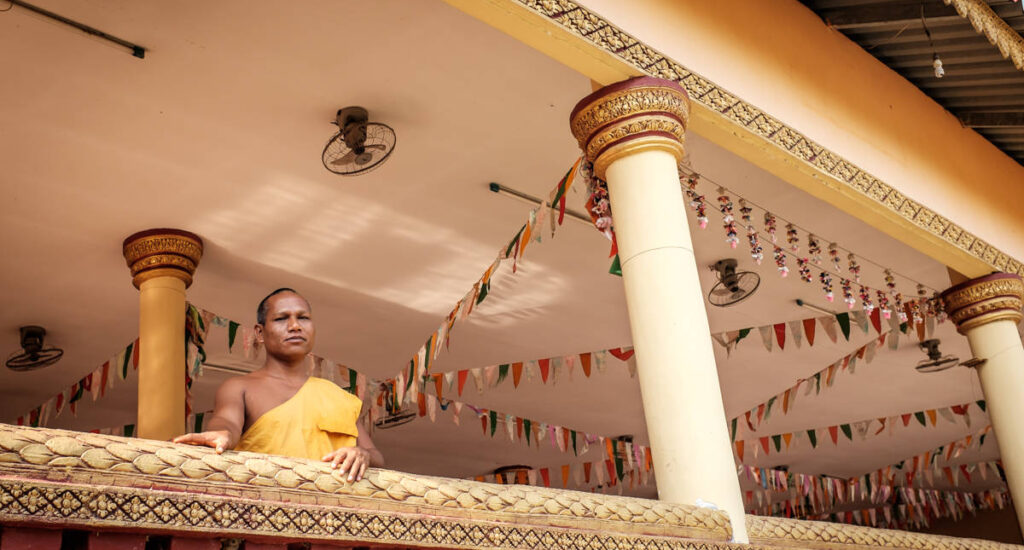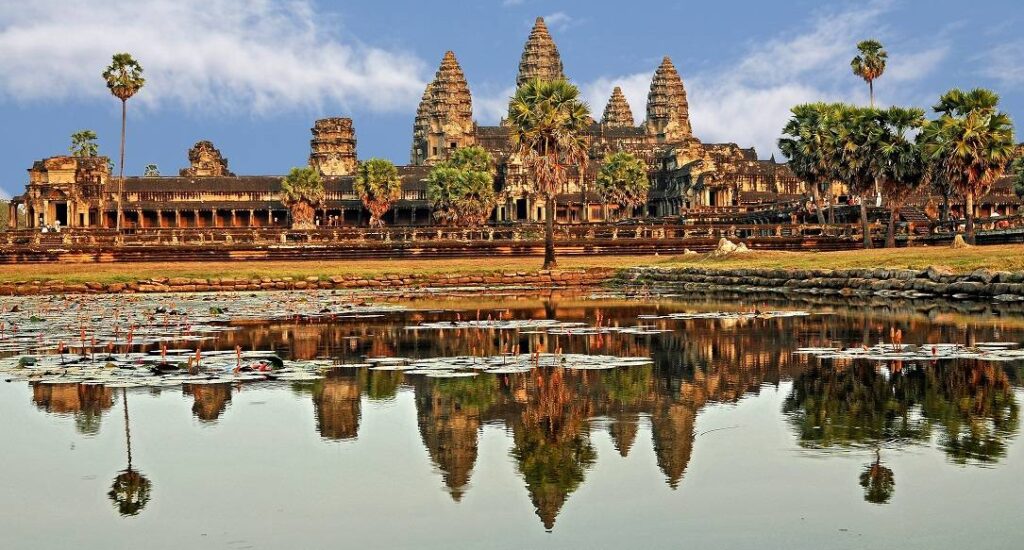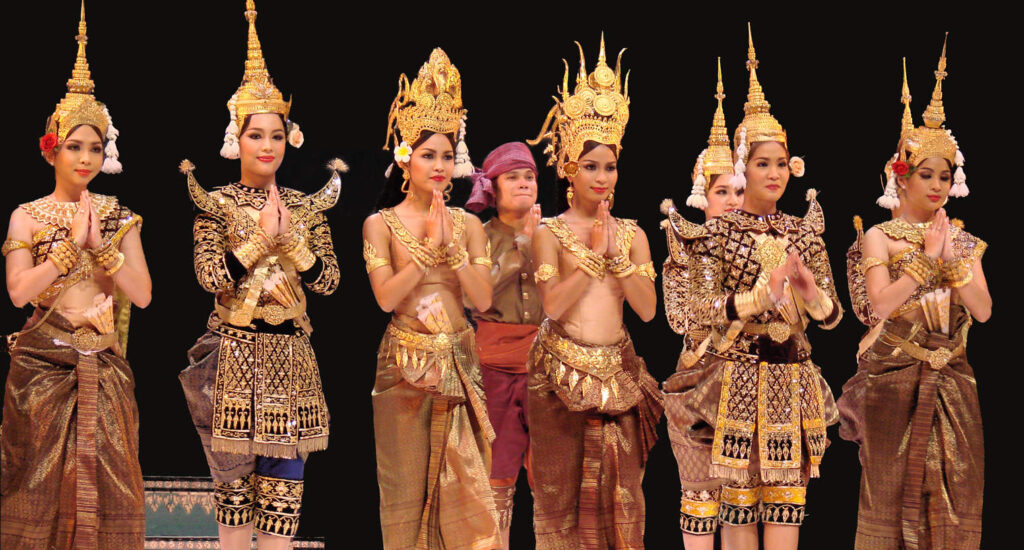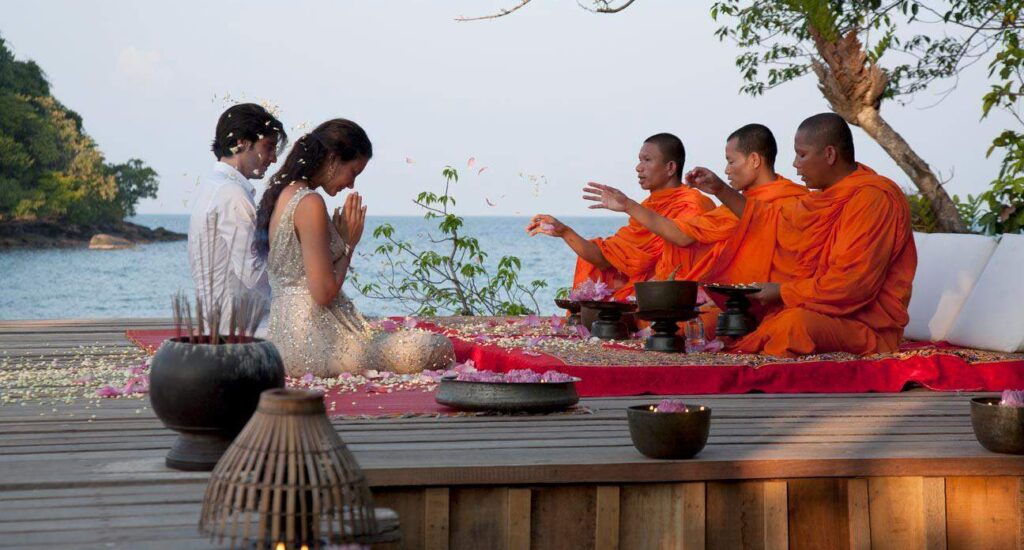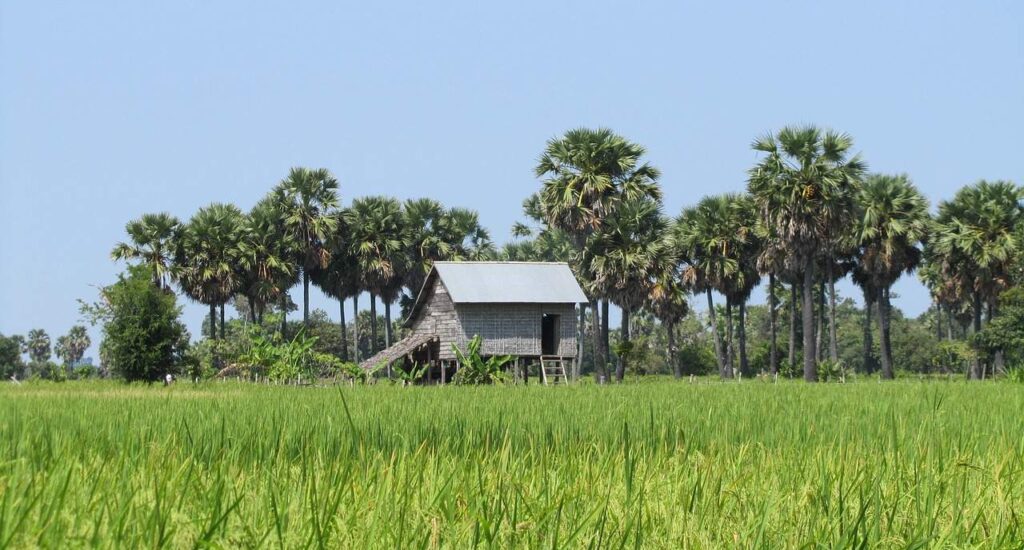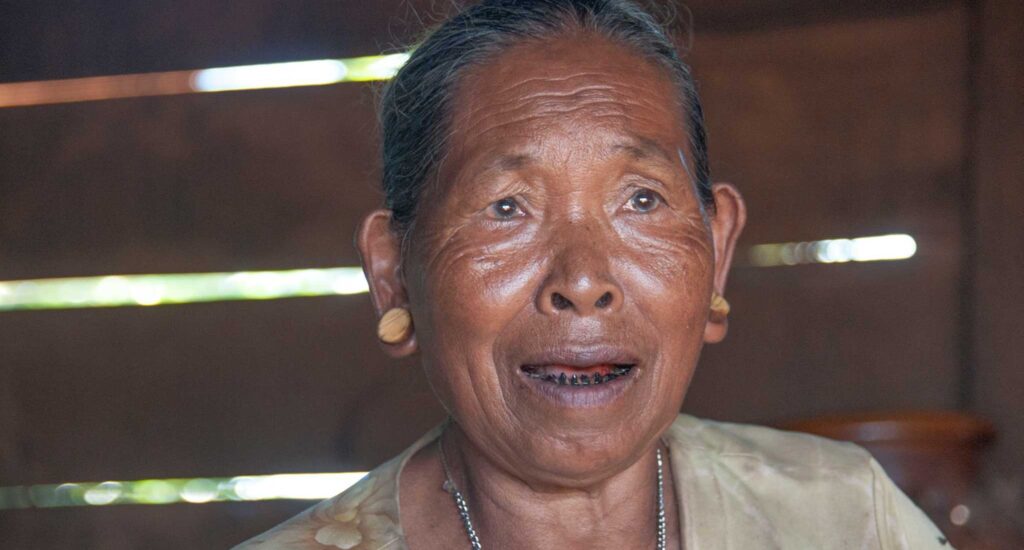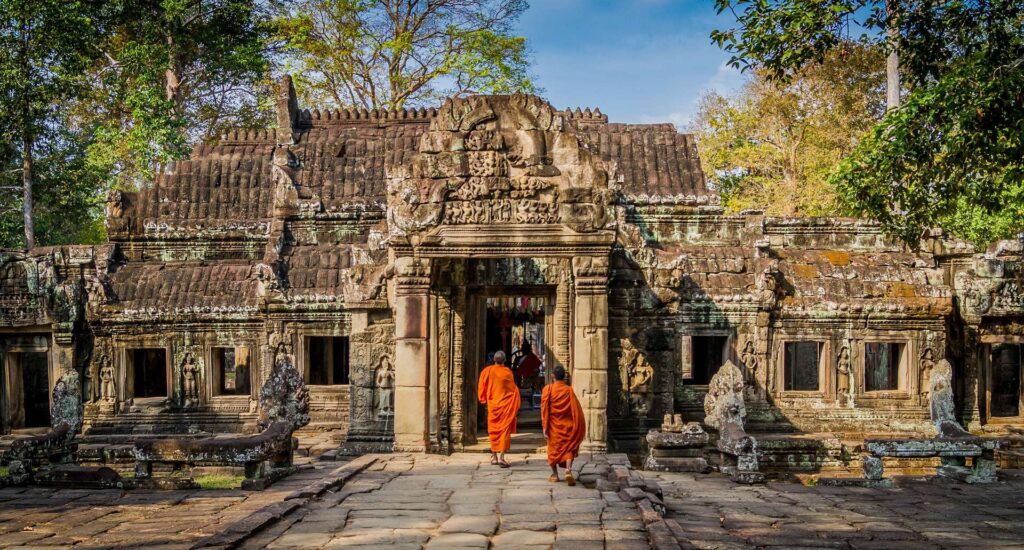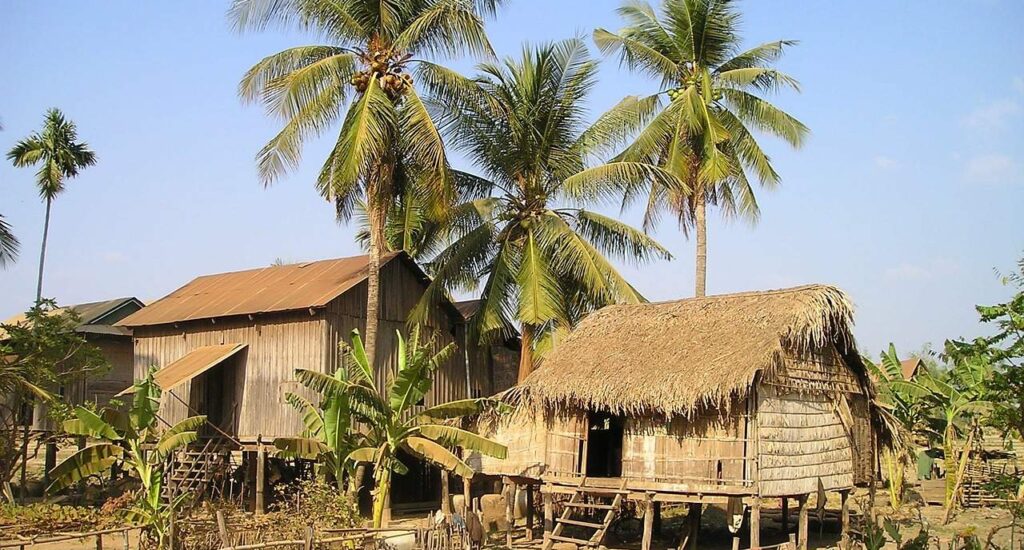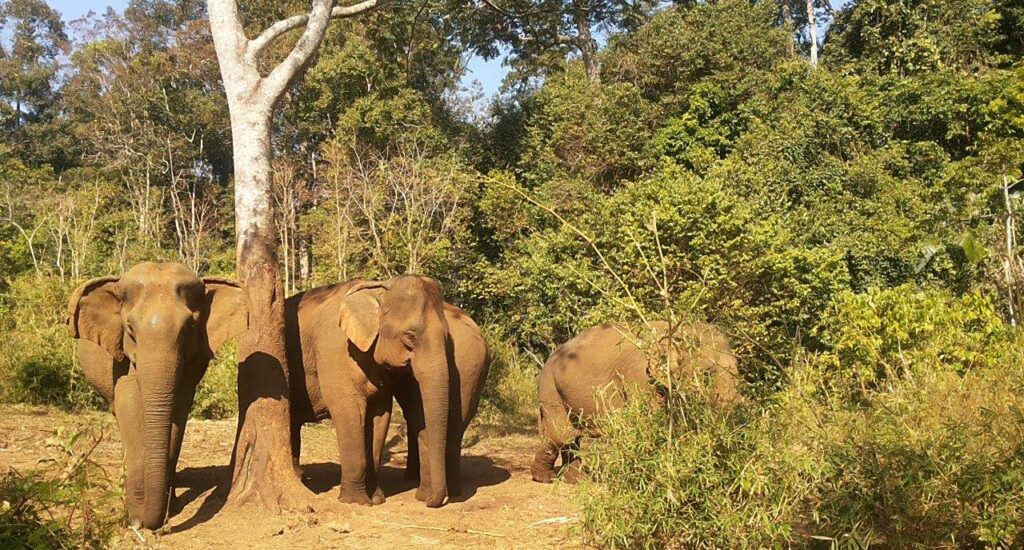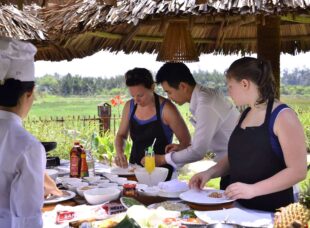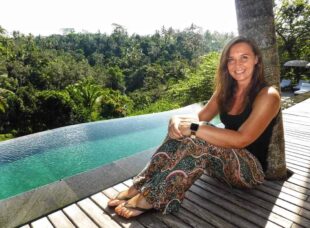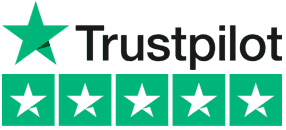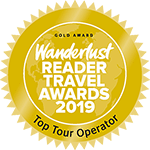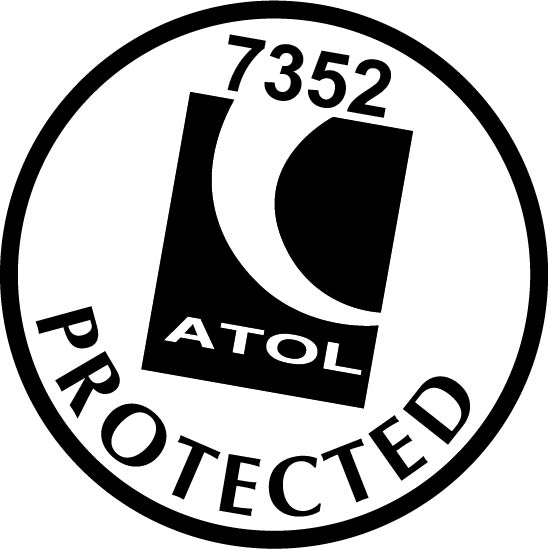Overview
Cambodia is a country made up of picture-postcard images: wide smiles; orange-robed monks; tropical fruit; more smiles; temple spires poking above the dense jungle; lush rice paddies; tuk-tuks; chicken satay nestling on banana leaf; traditional wooden boats; and yet even more smiles! At the centre of this is what is widely considered the most advanced civilisation of its day and their architectural master-piece, the Temples of Angkor – one of the seven wonders of the forgotten world and worth every accolade that has been bestowed upon them.
Noticeably less developed than its neighbours (Laos excepted?), Cambodia is a country which only recently emerged from 30 years of violence and despair. These years of turmoil were initiated by the Vietnam War and then exacerbated by the Khmer Rouge, a ruthless regime who wished to create a peasant-led, agrarian utopia … and killed one in five Cambodians in the process of trying. It is testament to the Khmer people that, despite three dark decades, there is a pervading feeling of optimism wherever you go in Cambodia. The one thing most remarked upon by any visitor is, without exception, the lasting impressions of the people, and the stories they have to tell. How can they possibly be so helpful, warm and genuinely friendly?
Phnom Penh is the nation’s reborn capital and it retains some faded French colonial splendour, with wide, tree-lined boulevards and impressive architecture set in a rapidly emerging Asian city. Then there is the laid-back, colonial heritage of Kep & Kampot; teetering stilt villages lining the great Tonle Sap lake the natural wonders of Koh Kong and the Cardamom Mountains, the untamed north-east and, to top it all, the tropical brilliance on the southern sands. This history-laden kingdom is full of surprises, not to mention the fantastic (and largely un-known) Khmer cuisine and wonderful artisan craftwork – Cambodia is a country of considerable appeal.
When to Travel
The weather in Cambodia is easy to understand, due to its uniform latitude and low altitude. Travel is possible year around, although the period from November through to February is generally considered to be ‘high season’. However, each season brings its own benefits, with rainfall during the wet season rarely lasting more than a couple of hours in the afternoon, whilst hotel rates plummet and the countryside is at its most lush and verdant. Many actively prefer to travel during the rainy season.
There are two distinct seasons:
The Dry Season: October – April/Early May
The dry season is, of course, when visitor numbers peak. In more remote parts, the roads are at their best and journey times are shorter because of this. Whilst October through to January are quite cool by Cambodian standards (still in the high 20°C’s!), by April the weather is absolutely scorching. When Cambodia is at its hottest it is only really possible to make early morning and late afternoon excursions, with a few hours by the hotel pool over lunchtime preferred by most. This happens to be a wonderful template when visiting the temples of Angkor!
Kep & the Islands Koh Rong, Koh Russey & Krabey on the south coast are popular during the dry season, as they bask in the brilliant sunshine and sea conditions are perfect. Over the period from late March through to May, river and lake levels are at their lowest before the rains arrive in earnest. Travel by boat can be problematic.
The Wet Season: Early/Mid May – October
Almost 80% of Cambodia’s annual rainfall falls over this period. Daytime temperatures average between 25°C and 27°C, although the early months of the wet season (May – July) remain very hot, but with only infrequent rainfall usually in the form of short downpours. In the latter months (late July – September) the rains tend becomes more constant and is often heavy and travel to the more remote corners of the country becomes almost impossible due to the state of the roads .
Travelling in monsoonal Cambodia does have its advantages – the dust is gone and the lush greenery of the countryside returns. Angkor Wat in particular is stunning during the wet season, with moats brimming and a drastic drop in visitor numbers.
Practicalities
Flights: There are currently no direct flights from the UK to Cambodia. The best options are flights via Bangkok (Thai, EVA or BA), via Hong Kong (Cathay Pacific) via Kuala Lumpur (Malaysian or BA) via Vietnam (Vietnam Airlines) or via Singapore (Singapore Airlines). A number of other airlines also fly to Cambodia via their respective hub cities or connecting to other airlines including Emirates, Bangkok Airways, Air Asia, Air France, Asiana Airlines, Cambodia Angkor Air, Cebu Airways, China Airlines, China Eastern Airlines, China Southern Airlines, Dragon Air, EVA Air, Jetstar Asia, Korean Air, Lao Airlines, Malaysia Airlines, Qatar Airways, Shanghai Airlines, Silk Air, Tiger Airways and Vietnam Airlines.
We price up our flights on a case-by-case basis, making sure we use the best available deals for your trip. If you have any particular preferences for airlines or routes, or are considering upgrading your flights, please let us know so we can include this in your proposal.
Language: Khmer.
Currency: Cambodian Riel (R) is the official tender in Cambodia. There is no coinage in Cambodia, only currency notes. However, the US dollar is the de facto currency and by far and away the most useful for the traveller – most hotels and restaurants, shops, taxis, buses and airlines actually set their prices in US dollars. Local currency is only used in small transactions and often, if you pay in US dollars, change will be given in Riel – thus building up a small cash float of more than you will actually need. It is best to keep a good supply of small denomination US dollar notes about you and note that worn or ripped banknotes will not be accepted – bring clean, unmarked bills only.
Electricity: 230 volts. Most wall sockets are French-style rounded pins, as well as Americans style flat pins.
Clothing: Comfortable lightweight clothing in natural fabrics such as cotton is most suitable for travelling in Cambodia. The dress code is fairly casual as in most parts of the tropics but it is advisable to cover arms and legs in the evenings against biting insects. A lightweight raincoat and umbrella are a good idea in the rainy season and the umbrella can also offer useful shade from the sun. Visitors should not wear shorts, short skirts or other skimpy clothing when visiting temples and monasteries and should ensure they have appropriate clothing for any visit to Angkor or access to temples will be limited. Shoes (and socks!) must be removed before entering any religious building or private home. It is therefore useful to wear shoes without too many laces and which can easily be taken off.
Etiquette: The Khmers are remarkably laid-back, friendly and relaxed – their hospitality is legendary. However, you do need to remind yourself that Cambodia is, in fact, a very conservative country where modesty is the order of the day. You can dress skimpily – many travellers do – but it won’t do you any favours in terms of the Khmers’ perception of you. If you are in a temple, it is better to dress reasonably modestly, but by the same token don’t get un-necessarily stressed about what is and is not appropriate. Be assured, they have seen it all! Likewise, openly public displays of affection will embarrass people, so don’t do it.Have respect for monks in general. Women should never touch them.
As with other countries in the region the concept of “face” governs social interaction on every level. You will get things done faster if you go out of your way to make sure that you don’t cause someone to lose face. If you find yourself getting angry, try not to show it as this will only be counter-productive. Another thing to remember is that a Cambodian reaction to uncertainty or embarrassment is simply to giggle or laugh. Smile and joke as much as you can instead – it’s the Cambodian way and people will be more willing to help you.
As in all Buddhist countries, the head is considered holy while the feet are considered dirty. Don’t go around touching people’s heads, even if it’s just patting a child on the head. Likewise, don’t point the soles of your feet at anyone and certainly not at a Buddha image. Cambodians tend to sit on the floor with their feet tucked to the side.
Health
As we’re not medical experts we feel it is essential you contact your G.P. regarding vaccinations and the like for travel to Cambodia. In addition to such vaccinations as you’d routinely have for living in the UK, further boosters are recommended for Hepatitis A, Typhoid, Polio and Tetanus. If you have visited a country where Yellow Fever is endemic, you will need a certificate of vaccination.
You must talk to your GP first, but it is worth also drawing your attention to this useful website: www.traveldoctor.co.uk/ – an interactive website providing specialist health information for travellers plus customised lists of travel medicines, vaccines for holidaymakers, global adventure travellers and expeditions.
Malaria is present in some rural areas at certain times of the year.
Visas
UK passport holders are required to obtain a visa for entry into Cambodia, and you need a minimum of 6 months of validity remaining on your passport from the date of your return to the UK after leaving Cambodia. The standard visa is valid for 30 days from the date of arrival in Cambodia. Tourist visas can be applied for either online or on arrival at your designated entry point. Most nationalities can get a visa on arrival at the international airports (Siem Reap, Phnom Penh and Sihanoukville) without prior registration. Non-UK passport holders should check with their local Cambodian embassy or consulate.
For all updates please check the latest FCO Travel Advice here: https://www.gov.uk/foreign-travel-advice/cambodia
Food & Drink
Before you travel with us, you will receive a guide to local restaurants and food in Cambodia, but in the meantime we have included a little introduction to Cambodian cuisine below.
Cambodian food isn’t particularly spicy, although it’s often delicately flavoured with herbs such as lemon grass and coriander. Many dishes are variations on fare from other Asian countries, especially China, on which Khmer cuisine draws heavily. Food is traditionally cooked in a single pot or wok over a charcoal stove; although gas burners are being introduced in the cities, many people prize the smoky flavour that food acquires when it’s cooked over charcoal. A lot of dishes are fried in palm oil and aren’t drained before serving, so food can be quite greasy; if you’re vegetarian it’s worth being aware that the pan is seldom washed out between the meat and vegetable dishes. Few Cambodians have refrigerators, and even if they do, they prefer to buy produce fresh from the markets as needed.
The cheapest food in Cambodia is available from street hawkers with handcarts or baskets dangling from a shoulder pole, who sell anything from fried noodles or baguettes, to fresh fruit and ice cream. Another source of cheap food is the country’s markets – open both day and night, though often in separate locations – where stalls sell a variety of dishes and desserts at prices only slightly higher than those charged by street hawkers. Each stall usually has its own speciality, and you can order from any stall in the market irrespective of where you’re sitting. When you’ve finished, you pay the stall closest to you for the whole lot and they’ll sort out the money among themselves.
Most Cambodian meals are based around polished white rice, which is usually served either in a large bowl from which you help yourself, or as individual platefuls. Diners typically order two or three dishes – fish or meat, vegetables and perhaps a soup – which are placed in the centre of the table; each person helps themselves from the communal fare in small amounts at a time. Smoky, charcoal-grilled chicken and fish are available everywhere from roadside stalls to restaurants, the fish served with a dip of grated green mango, chilli, garlic and fish sauce, while the chicken comes with a salad garnish and a sweet chilli sauce.
In the afternoon and evening, crusty baguettes, filled with your choice of meat pâté or sardines and pickled vegetables, can be bought from street hawkers for around 2000 riel. At beer stalls in night markets, you’ll find grueng klaim, fibrous strips of dried beef or pork served with pickles and generally eaten with alcoholic beverages.
Bottled water is found everywhere, as Cambodian tap water isn’t considered safe to drink. Be aware that the ice that is invariably added to cold drinks (unless you request otherwise) may not be hygienic except in Western restaurants.
Travellers Code of Conduct
– We provide all of our clients with a “Travel Facts” document upon confirmation of your booking. This details useful facts and travel advice for your chosen destination, including restaurant recommendations, reading tips, basic language, cultural traditions, climate information and brief historical overviews. We feel that this offers a useful insight into the country you are visiting, and can help you interact with local residents in a more sensitive, well informed manner. Please try to take the time to read this information before your visit, if at all possible.
– A number of the countries in which we operate holidays are religious societies with a widely observed set of customs. Always respect these norms, particularly when visiting religious buildings.
– To the best of our knowledge, all of the hotels, lodges and camps within our portfolio operate stringent measures to minimise water usage. All of our destinations have issues with water supplies to a certain extent so feel free to raise any possible wastage should you encounter it during your stays, either with the accommodation or with us upon your return.
– Please ask before taking photographs of people, and respect their wishes should an individual not be happy to be photographed. We find that friendly requests and a smile are usually met with assent.
– Strive where possible to make your own contribution to environmental practices within the destination you are travelling. This might include minimising your electricity usage, avoiding smoking in protected areas, sticking to marked roads at all times while self-driving, avoiding coral while snorkelling and safely disposing of all litter (recycling where possible).
– Where possible, try to purchase from local suppliers. This includes shopping for souvenirs, eating out in restaurants and booking further excursions during your free time. In areas where haggling are an accepted part of daily life, don’t become angry or offended if you are unable to obtain what you perceive as a fair price for an item. We emphasise to local suppliers that our clients should never be taken on unsolicited shopping trips, but if this does happen, try to retain your sense of humour, provide a firm refusal to participate and tell us about this on your return. We pass on all feedback from every trip undertaken with Holiday Architects to the relevant local suppliers, who share our commitment to travelling with sensitivity.
– Please don’t remove any indigenous items from their natural habitat and attempt to bring them back as a souvenir. This particularly applies to coral, shells, plants and food in the natural world, and to cultural artefacts and antiques.
– If you are unsure about anything relating to the above, please feel free to ask our local suppliers or your Holiday Architects specialist. All of these people either live or have travelled extensively in the country you are visiting and will be more than happy to offer their considered advice.


